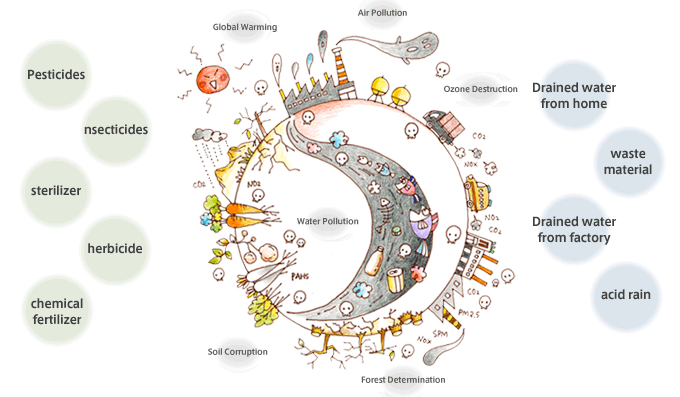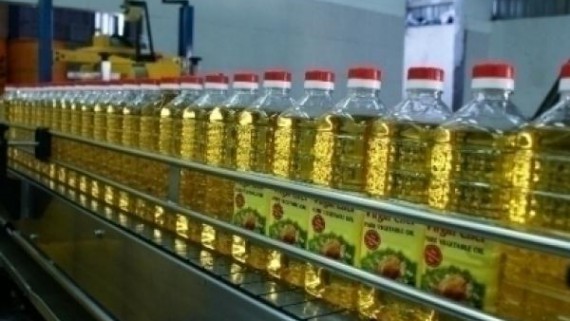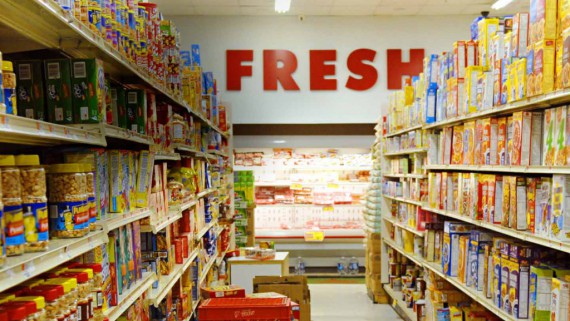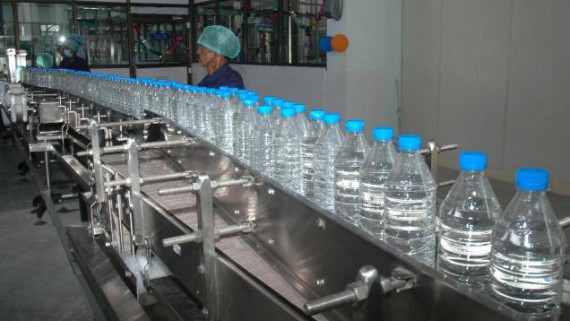Food and Water Pollution in India
Food pollution means the presence in food or associated with food of toxic chemicals(elements or compounds) and/or biological contaminants which are not naturally present in food or are above their natural background levels (for those chemicals which are naturally found in some foods). This may affect each of us by causing mild to severe food-illnesses or, even worse, contributing or causing the development of serious health problems such as hormonal and metabolism problems, or even various types of cancer. Nervous system problems may also be induced by food polluted with certain pesticides. Additionally, in rare cases when highly polluted food is consumed, serious food poisoning or death may occur almost immediately. In average, more than 70 million cases of food-borne illnesses occur in U.S. every year resulting in approx. 5,000 deaths per year!
The causes of food pollution are many. Basically, any pollutant that comes in contact with food has the potential to pollute the food. Various vegetables may get contaminated with toxic bacterial strains (from irrigation water, groundwater, or soil) which may only be destroyed by processing the polluted food at high temperatures. As for the toxic chemicals, they may get into the food causing food pollution in a variety of situations including:
- growing of food (e.g., crops, fruits, vegetables) in polluted soils, solid wastes (e.g., mine tailings) or areas with polluted groundwater;
- irrigation of grown food (e.g., vegetables, fruits, crops) with polluted water;
- growing of food (e.g., crops, fruits, vegetables) in areas with polluted air;
- agricultural treatments with pesticides, insecticides, and/or herbicides;
- agricultural application of sewage sludge and/or polluted fertilizers (which contain ash from power plants);
- consumption of polluted water and/or food by animals (fish or other animals);
- food processing, packaging, and handling;
- propagation and concentration of pollutants through the food chain.
The fact that plants (vegetables, crops, or trees) become contaminated with the pollutants from the environment is based on the ability of plants to extract environmental pollutants along with water and nutrients through their roots. In the case of air pollutants, those usually enters plan also through roots after being first deposed on the ground with precipitation water. This is why some plants (non-edible species) are actually used to remediate low to moderately polluted soil by extracting pollutants from soils (an innovative remediation called phytoremediation).
According to the many causes of food pollution, the sources of pollution in food are various. They include various chemicals and/or microorganisms that get into contact with food during growing, processing, or packaging stages. Basically, any existent environmental pollutant may get one way or another into our food. Thus, any of the sources polluting air, water, and soil may also become sources for food pollution.



